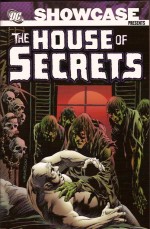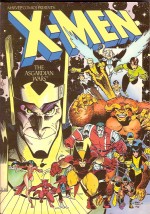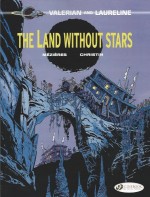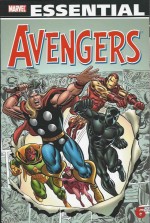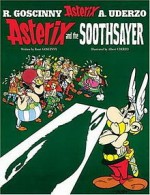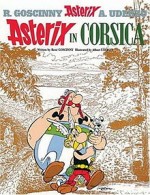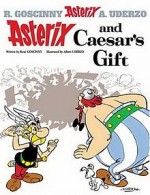
By Donna Barr (Aeon)
ISBN: 1-883847-07-9
The Desert Peach is the supremely self-assured and eminently efficient gay brother of the legendary German soldier hailed as “the Desert Foxâ€. Set in World War II Africa and effortlessly combining hilarity, absurdity, profound sensitivity and glittering spontaneity, the stories describe the trials and tribulations of Oberst Manfred Pfirsich Marie Rommel; a dutiful if unwilling cog in the German War Machine, yet one determined to remain a civilised gentleman under the most adverse and unkind conditions.
However, although as formidable as his beloved elder sibling, the gracious and genteel Peach is a man who loathes causing harm or giving offence and thus spends his service commanding the dregs of the military in the ghastly misshapes of the 469th Halftrack, Gravedigging & Support Unit of the Afrika Korps, daily endeavouring to remain stylish, elegant, civil and gracious to the assorted waifs, wastrels and warriors on both sides of the unfortunate global conflict.
It’s a thankless, endless task: the 469th houses the worst the Wehrmacht has ever conscripted, from malingerers and malcontents to useless wounded, shiftless conmen, screw-ups and outright maniacs.
Pfirsich unilaterally applies the same decorous courtesies to the sundry natives inhabiting the area and the rather tiresome British and Anzac forces – not all of whom are party to a clandestine non-aggression pact Pfirsich has agreed with his opposite numbers in the amassed Allied Forces. In fact the only people to truly annoy the peace-loving Peach are boors, bigots, bullies and card-carrying Blackshirts…
The romantic fool is also passionately in love with and engaged to Rosen Kavalier: handsome Aryan warrior and wildly manly Luftwaffe Ace…
Arguably the real star of these fabulous frothy epics is the Peach’s long-suffering, unkempt, crafty, ill-mannered, bilious and lazily scrofulous orderly Udo Schmidt, a man of many secrets whose one redeeming virtue is his uncompromising loyalty and devotion to the only decent man and tolerable officer in the entire German army.
This tragically rare sixth softcover collection reprints issues #16, 17 and 19 (#18 being a reproduction of the innovative Musical Program which accompanied the stage show: to see that check out The Desert Peach Webcomic or http://www.desert-peach.com/comic/DP18.pdf) and starts with an enchanting comic introduction from the captivatingly clever Mike Kazaleh before ‘Flight of the Phoenix’ opens the comedic assault. Even though ill-bred rogue Udo’s impending wedding to Tuareg princess Falila has been apparently side-lined, a spoil of that outrageous betrothal – a magnificent Arabian war-mare named Phoenix – is still causing trouble for Pfirsich, who is her nominal owner.
The steed is wild and utterly untrained, constantly causing trouble for the decidedly neat and tidy Peach and especially Sergeant Mögen and Lieutenant Hecht, who are responsible for her care…
When scattered tribesmen convene a colossal horse-fair on the camp’s doorstep, the problems magnify exponentially: not only was Phoenix stolen, but she comes from legendarily purebred lines and unless the Peach can arrange an honourable and fitting stud for her it might result in a native uprising…
Now all he has to do is select the right one out of the hundreds of willing stallions and touchy, eager Arab owners, but as usual the soldiery have the own ideas on the perfect partner, all filtered through personal prejudices and ideological bigotry…
So when Udo attempts to settle the quandary one dark night by taking Phoenix to his own preferred favourite, all hell naturally breaks loose as the skittish steed rampages through camp before making her own choice… When the valiant Rosen and sundry soldiers try to catch her, Udo then ends up trapped between the ever-so-keen equine bride and her equally impatient suitors, and taken for a ride he’ll never forget…
As a consequence of the riot Udo is held responsible for the accidental gelding of a stallion and as an outlander faces death or worse – until somebody suggests that if he were actually married to his desert princess he’d be a tribesman and allowed to buy his way out of trouble…
This is followed by ‘Culture Shock’ as fanatical political officer Winzig works himself into a tizzy about the upcoming miscegenation nuptials and reveals a long-hidden shameful secret: he is a musical prodigy whose piano playing could make Devils weep and Angel dance with delight. Most appalling of all is his facility for jazz – a form of music the Nazis have declared “sub-humanâ€â€¦
His secret out, Winzig is easily cajoled by Pfirsich into playing at the up-coming wedding, but other problems are surfacing. The rumours that Udo is Jewish are circulating again (they’re all true but were scotched by the Desert Peach in book 5: Belief Systems) but when the coordinating commanders of both Tuareg and German parties are trying to sort out the form of service, the panicking and reluctant groom sees a get-out-of-jail-free card – whatever ceremony is performed, it won’t be binding…
Udo had been griping and trying to weasel his way out of his impending, unwanted but necessarily pragmatic wedding from the start. The swarthy little scoundrel wanted sex not commitment, and now only the threat of agonising dismemberment is making Schmidt nee Isador Gülphstein honour his word and live up to his responsibilities…
That is of course until the poor shmuck catches sight of Falila in all her wedding finery…
After a chaotic, joyous and hilarious wedding and reception in the local bordello everything seems to have worked out until the bride’s father hears a certain tale that his new son-in-law is a Hebrew…
Using humour to devastating effect, the author manipulates the crisis to make a few telling points about religion and prejudice and, with order restored, this volume then concludes with the utterly manic and earthily scatological ‘Self-Propelled Target’ as some of the weary and jaded grave-digging unit play with wrong cadaver and both Winzig and Pfirsich accidentally ingest organic matter from a rotting – and exploding – corpse. With Pfirsich revoltingly hors-de-combat the men of the469th declare open war on the hated political martinet they call the “Human Swastikaâ€â€¦
With the Peach incontinent and incommunicado the battle of nerves and dogma rapidly escalates to terrifying heights and when the recuperating Peach almost loses his life in one of the malicious pranks, Udo at last steps in to settle things with disastrous and disgusting consequences…
Treading in the same the same anti-war trench as Three Kings, Hogan’s Heroes, Oh, What a Lovely War! and Catch 22, these Desert Peach adventures are always bawdy, raucous, satirical, authentically madcap and immensely engaging; this time though they’re also painfully romantic, revoltingly near-the-knuckle and intoxicatingly subversive.
These gloriously baroque yarns were some of the very best comics of the 1990s and still pack a shattering comedic kick, liberally leavened with situational jocularity, accent humour and lots of footnoted Deutsche cuss-words for the kids to learn. Moreover, with this volume the potential of the minor supporting characters is at last fully realised with The Peach often relegated to a minor or supervisory role.
This captivating excursion is also capped off with many magical extras: hilarious marginal illustrations and more cut-out paper-dolls and extra outfits for you to admire and play with: this time featuring the wardrobe of Udo and the log-suffering Winzig.
The Desert Peach ran for 32 intermittent issues via a number of publishers and was subsequently collected as eight graphic novel collections (1988-2005). A prose novel, Bread and Swans, a musical, and an invitational collection by other artists entitled Ersatz Peach were also created during the strip’s heyday. A larger compendium, Seven Peaches, collected issues #1-7 and Pfirsich’s further exploits continue as part of the Modern Tales webcomics collective…
Illustrated in Barr’s fluidly seductive wood-cut and loose-line style, this book is another must-have item for lovers of wit, slapstick, high drama and belly-laughs and grown-up comics in general. All the collections are pretty hard to find these days but if you have a Kindle, Robot Comics have started releasing individual comicbook issues, and for anybody with internet access and mature tastes as mentioned above there’s always The Desert Peach webcomic to fall back on…
© 1992-1994 Donna Barr. Introduction © 1994 Mike Kazaleh. All rights reserved. The Desert Peach is ™ Donna Barr.


